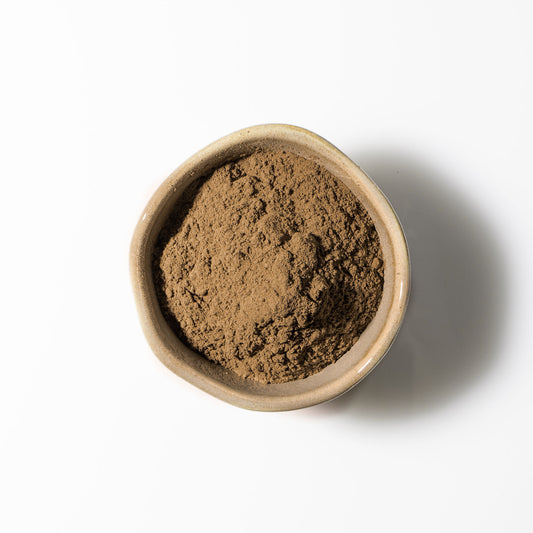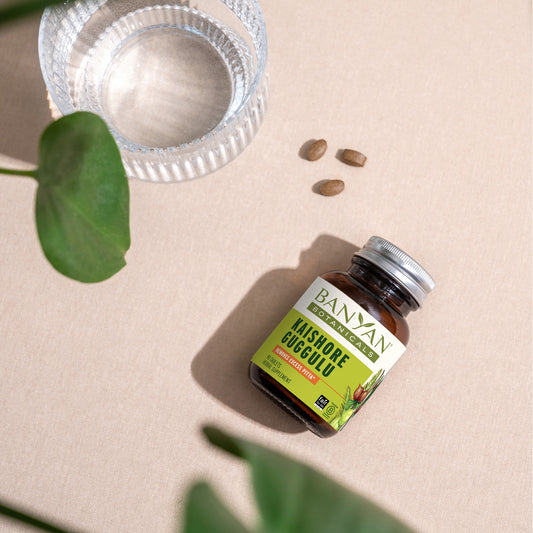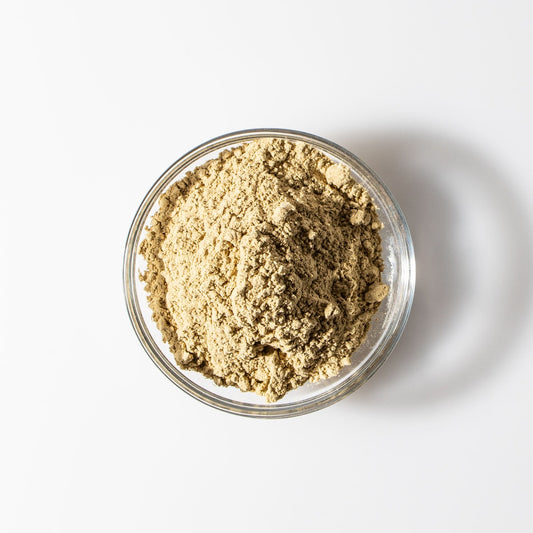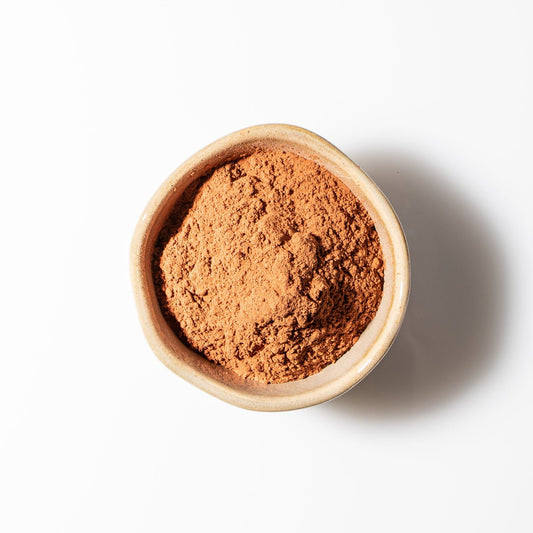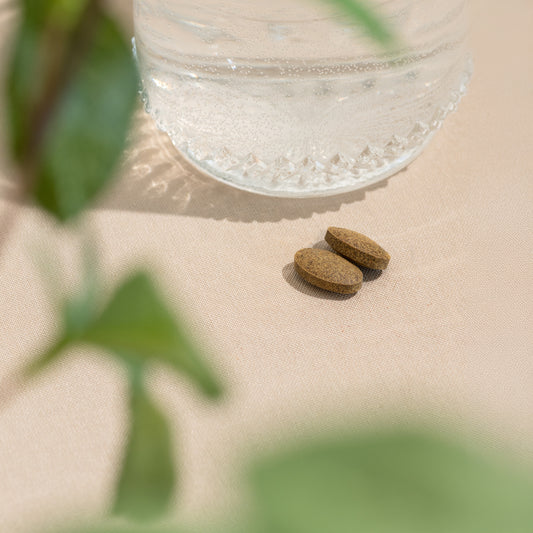Balancing Pitta in the Joints
The Ayurvedic Approach

Pitta-type joint ailments are initiated by excess pitta in the body. The imbalance typically begins in the digestive tract, where pitta has accumulated as a result of a pitta-provoking diet or lifestyle. This might involve eating foods that are very spicy, sour, salty, or excessively oily.
Pitta is also aggravated by heightened intellectual focus, ambition, competition, judgment, and intense exercise. These and other pitta-provoking influences elevate pitta in the small intestine, pitta's natural home in the body.
As the excess begins to accumulate, it can cause excessive thirst, a sharp and insatiable appetite, heartburn, acid indigestion, loose stools, skin irritations (e.g. burning, itching, eczema, acne, dermatitis), and fiery emotions like frustration, irritability, anger, rage, and criticism.
Meanwhile, the excess pitta also compromises agni (the metabolic fire), which can initiate the formation of ama (toxins) in the GI tract.
If these imbalances are not addressed, the accumulating pitta and ama can migrate to the colon, and will eventually enter circulation—in search of another place to lodge.
This is where the joints come in; the joints have a natural affinity for imbalances that enter circulation from the colon because the colon is the seat (home) of vata, and the bones and joints are another important gathering place for vata in the body.
Similarly, the ama shares many qualities with kapha dosha and therefore has an affinity with shleshaka kapha, a subtype of kapha that is primarily responsible for cushioning the joints.
If the condition of the local agni in any of these tissues is weak, the excess pitta and ama can invade them, causing inflammation, swelling, and pain. Over time, this inflammatory influence can damage the joints, causing deformity and loss of function.
How to Identify Excess Pitta in the Joints
So what does this process feel like in our bodies? Pitta in the joints often causes the joints to be visibly red and hot to the touch.1 They tend to be swollen, inflamed, and persistently tender, even without any provoking movement or strain.2
Tips for Balancing Pitta
In order to balance pitta in the joints, we need to clear the pitta and ama from the joint space and send it back to the digestive tract, where it can be eliminated.
But we simultaneously need to tend to agni—both in the digestive tract and in the bone and joint tissues—to ensure that the pitta aggravation, the subsequent creation of ama, and their mutual intrusion into the joint spaces is halted.
Each of the following recommendations supports this process in its own way.
Eat a Pitta-Balancing Diet
Because joint ailments typically begin in the digestive tract, an appropriate pitta-balancing diet is essential to the healing process.
In the case of excess pitta (which is light, hot, sharp, and oily), focus on ingesting mild, hearty, grounding, and energizing foods that are tempered with pitta-pacifying spices and garnishes like fresh basil, cardamom, fresh cilantro, coriander, cumin, dill, fennel, mint, parsley, peppermint, saffron, spearmint, tarragon, and turmeric.
Favor the sweet, bitter, and astringent tastes while reducing exposure to the sour, salty, and pungent tastes.
Pitta's lightness and intensity need to be grounded with substantive foods, which typically taste naturally sweet. Complement the sweet taste with bitter foods that will cool pitta's intense heat, and astringent foods (e.g. legumes, apples, broccoli, crackers, popcorn) that effectively absorb pitta's oily and liquid qualities.
Include only moderate amounts of high quality, organic oils like ghee, sunflower oil, and coconut oil.
It is important to minimize alcohol and caffeine consumption and to do your best to avoid foods that can further aggravate pitta in the joints, like hot, spicy foods, pickles, spinach, and tomatoes.3
In addition, you can take one or two Pitta Digest tablets about thirty minutes before lunch and dinner, or a similar formula, Avipattikar powder, with warm water before meals.
Massage the Joints with Soothing Oils
These oils help soothe excess pitta in the joints. They are best applied at room temperature so that they cool pitta's intense heat.4
Castor Oil
Castor Oil increases circulation, helps loosen and clear accumulated ama, and supports the body's natural ability to dissipate inflammation and promote healing.5
Coconut Oil
Coconut Oil is wonderful for calming pitta throughout the body. It is cooling, soothing, and it balances pitta while bolstering the body's natural healing process.
Ice the Joint When Appropriate
While Ayurveda does not often recommend icing the body, if a joint is notably hot and inflamed, icing it can help reduce inflammation and bring relief.
However, it is important to concurrently address the root cause of the imbalance—in this case, elevated pitta—with other treatment strategies that go beyond relieving the symptoms.
Balance Pitta throughout the Day
Pitta tends to benefit from consistency in structure and routine. If this is a new concept for you, you can begin simply by moving toward awakening and going to bed at the same times each day and eating your meals at consistent times from one day to the next.
Beyond these foundations, focus on establishing a pitta-balancing daily routine, sprinkling supportive elements throughout the day, and including whichever of the following pitta-friendly additions appeal to you.
Exercise
Choose activities that are not overly intense. Instead, practice relaxed effort in your workout. Enjoy things like walking, hiking, light jogging, swimming, cycling, or yoga in the morning or evening (when it is coolest).
In addition, try to breathe through your nose the entire time; this helps appropriately pace your activity and tempers pitta's intensity.
Yoga
Embrace a Pitta-Balancing Yoga practice. Poses that are especially supportive of pitta type joint issues include Half Boat (Ardha Navasana), Bow (Dhanurasana), Camel, Cow Face (Gomukhasana), Locust (Salabhasana), and Moon Salutations (Chandra Namaskar).6
(Note: some of these poses will appear under the Kapha-Balancing Yoga Department, but are also wonderful for pitta in the joints).
Pranayama
Just five to fifteen minutes of pitta-balancing pranayama every day on an empty stomach can be transformative. These practices help balance pitta while digesting and clearing ama. In particular, consider the following practices:
Sheetali (Cooling Breath) helps cool and quiet pitta throughout the system, reducing inflammation and balancing agni.
Kapalabhati (Skull Shining Breath) is very detoxifying and specifically helps stimulate synovial circulation in the joints, which can be very beneficial when there is inflammation there.
Bhramari (Humming Bee Breath) soothes and supports the nervous system while encouraging healing in the bodily tissues.
Meditation
Consider adding five to ten minutes of Empty Bowl Meditation to your daily routine to effectively quiet the mind and calm the nervous system, which will support the joints—both locally and systemically.
Consider the Addition of Pitta-Balancing Herbs
Herbs can help balance pitta systemically, but can also optimize the health of the digestive tract (where many joint imbalances originate), kindle agni throughout the system, and encourage the elimination of ama—both from the GI tract and from the joints themselves.
More specific information about how each of these herbs and formulas supports the joints is provided below.
Kaishore Guggulu
Guggulu resin is a penetrating, detoxifying, and rejuvenating herb renowned for its ability to scrape naturally accumulating toxins from the channels of the body (physical and energetic pathways), but also for its capacity to carry other herbs deep into specific tissues.
This traditional Ayurvedic formula has long been used to balance excess pitta in the joints and muscles. Take one Kaishore Guggulu tablet three times per day.7 Or, if you prefer, this formula is also available as a powder; take ¼ teaspoon three times per day with warm water.
Guduchi
Despite its heating nature, Guduchi is a powerful nutritive tonic that effectively removes excess pitta that has settled in the joints. It also cleanses the blood, supports circulation, tonifies the nervous system, and helps clear ama from the body.8
Manjistha
Manjistha is a deeply pitta-balancing, blood-purifying herb renowned for its ability to remove excess heat and natural toxins from the blood. It can therefore complement any efforts to clear excess pitta from the joints. Manjistha is available as a tablet and a powder.
Aloe Vera Gel
Aloe vera gel is very pitta-balancing. It is soothing, cooling, rejuvenating, and it helps clear ama from the system. It also has an affinity for the bodily tissues and can act as a vehicle for delivering herbs deeper into the body.
Systemic Support for Pitta
Balance pitta systemically with Healthy Pitta tablets. To help clear pitta from your channels of digestion and elimination, consider Pitta Digest tablets or Avipattikar powder (a formula very similar to Pitta Digest).
And finally, if pitta is truly the primary concern, consider taking Amalaki instead of triphala to more specifically balance pitta throughout the system.
About the Author
Melody Mischke, AP
Melody Mischke is a certified Transformational Coach, Ayurvedic Practitioner, Yoga Teacher, Writer, and Intuitive. She began studying meditation in India at 18, and has...
More for You
Balancing Kapha in the Joints
Excess kapha in the joints can manifest as stiffness, swelling, and restricted mobility. Learn how to balance kapha for more flexible, comfortable joints.
Balancing Vata in the Joints
Balancing excess vata in the joints can help reduce dryness, cracking, popping, and stiffness. Read this resource for tips to support healthy joints.
References
1 Vasant Lad, The Complete Book of Ayurvedic Home Remedies (New York: Three Rivers Press, 1998), 128–9.
2 Ibid.
3 Ibid., 129–30.
4 Ibid.
5 Sebastian Pole, Ayurvedic Medicine: The Principles of Traditional Practice (London: Churchill Livingston, 2006), 153.
6 Lad, Home Remedies, 130.
7 Ibid.
8 Pole, Ayurvedic Medicine, 189–90.



